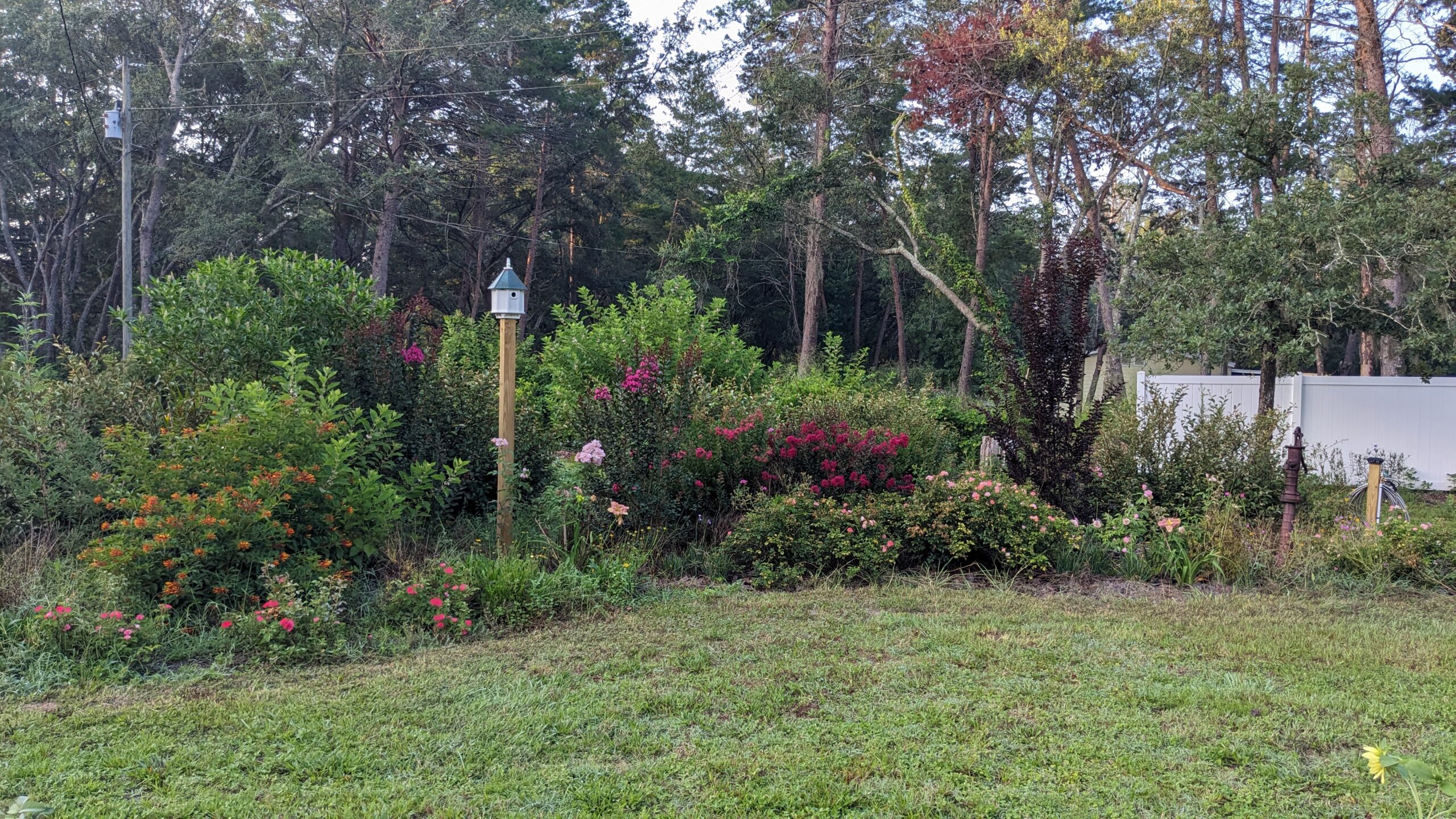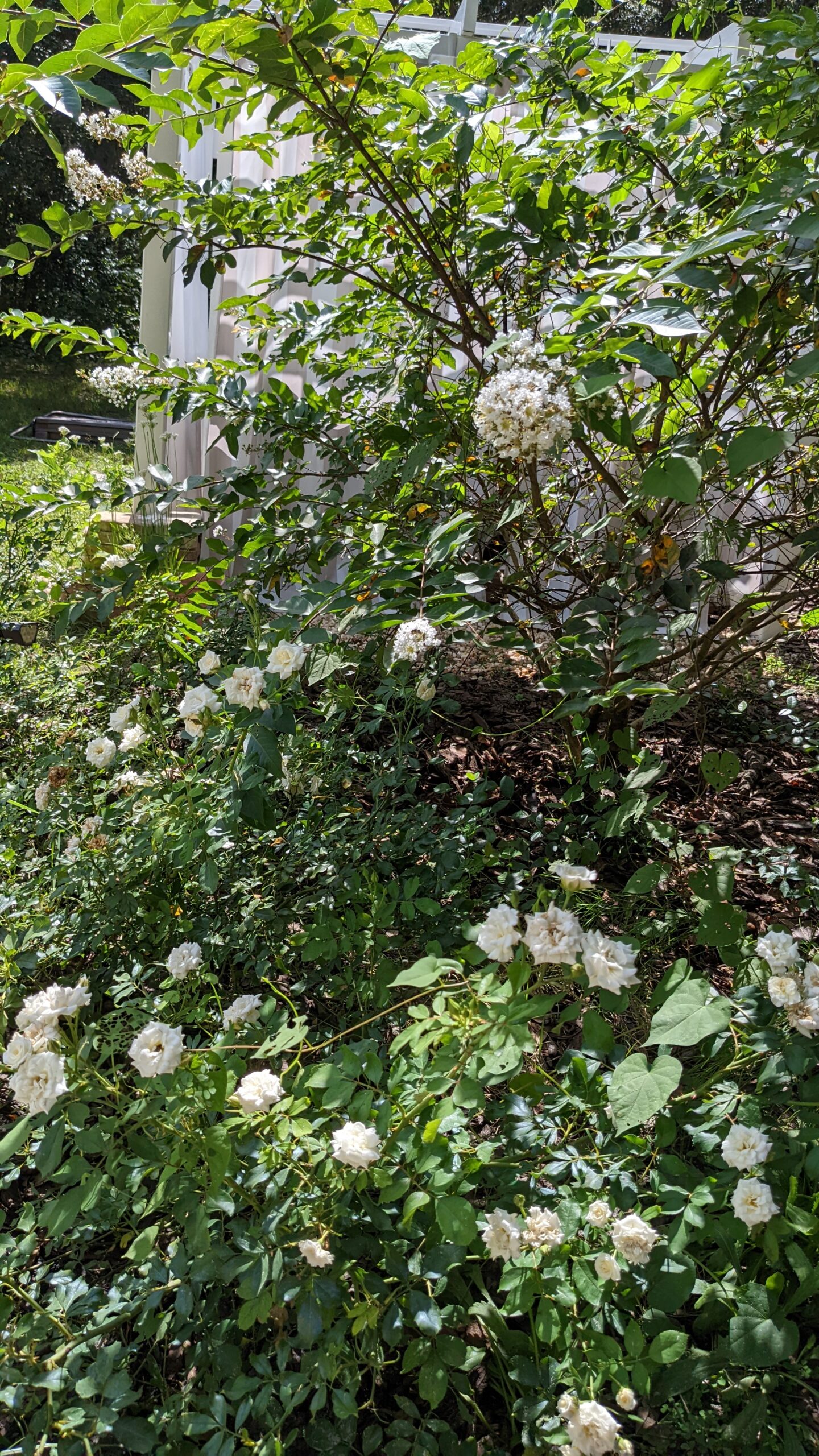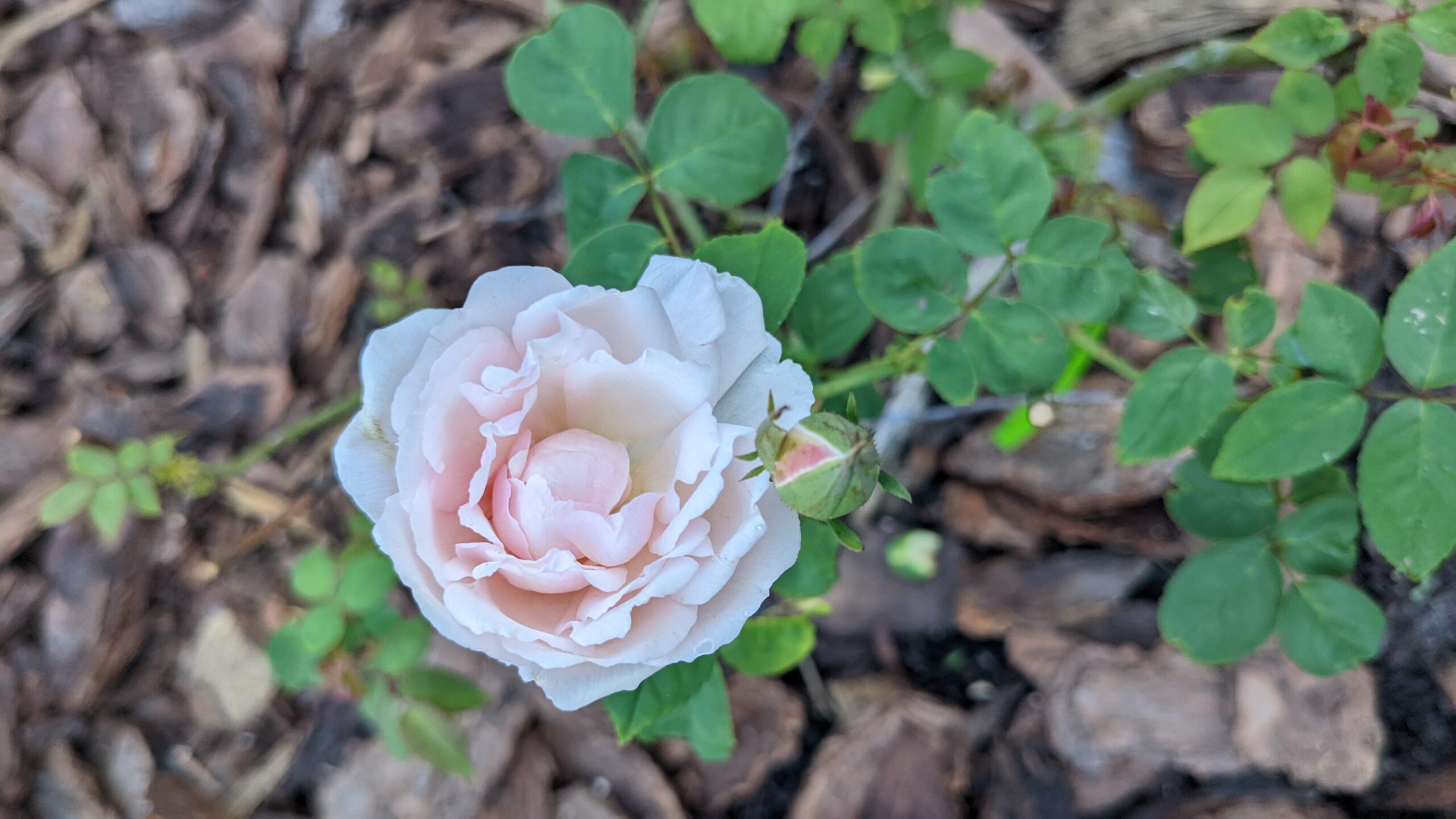Recently, the electric company cleared out the easement to the transformers along the edge of my property. From time-to-time, the trees in the wooded area would brush up against them causing them to explode, set trees on fire, and shut down our electricity.
We live at the end of a one-mile long dirt road for which we have two seasons: mud and dust. Needless to say, there isn’t much traffic. Regardless, we like privacy and needed to screen off what the tree trimmers opened up. We needed some fast growing wide and tall shrubs and small trees. Since the area was a former horse pasture, the lawn is mostly some pretty aggressive weeds.
I had to strategically layout a design that wouldn’t eventually encroach on the live wires overhead. The plan included an enormous kidney shaped island in the open area next to a huge Beautyberry and some trees that Hurricane Irma downed.

We rented a motorized tiller and got to work in the oppressive heat of April. After clearing out the weeds, we planted silverthorn as a back row, with Chinese fan palm for immediate screening. In front of that we massed Muhly grass and in front of that dwarf crape myrtles and drift roses. To the sides we added Dianella, flax lily and gaura Whirling Butterlies. To fill any gaps, we planted three Washingtonia palm trees and a few sweet viburnum on the easement side, and some blue agave I nabbed from our agave garden. Later on, we added zinnia flowers from seed and one odd-ball firebush that is the only orange element other than a few of the zinnias. I had propagated an Oleander that was also added to the mix. I left plenty of room for all these plants to grow but the overall theme is pinks, whites, and some apricot in the drift roses.
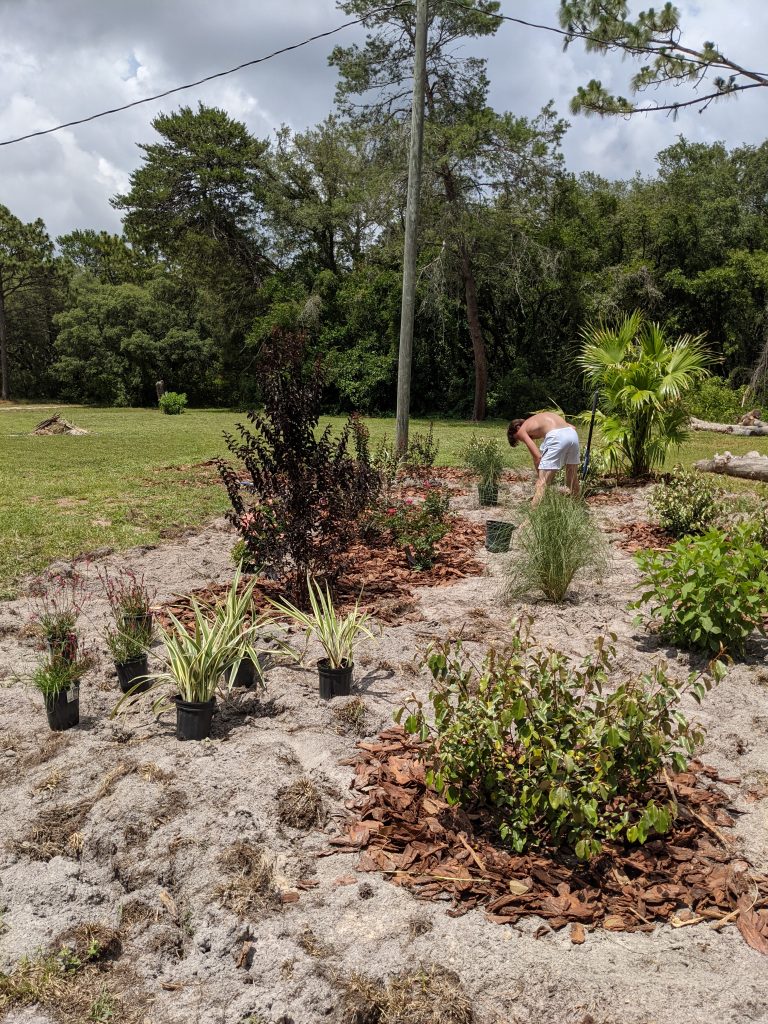
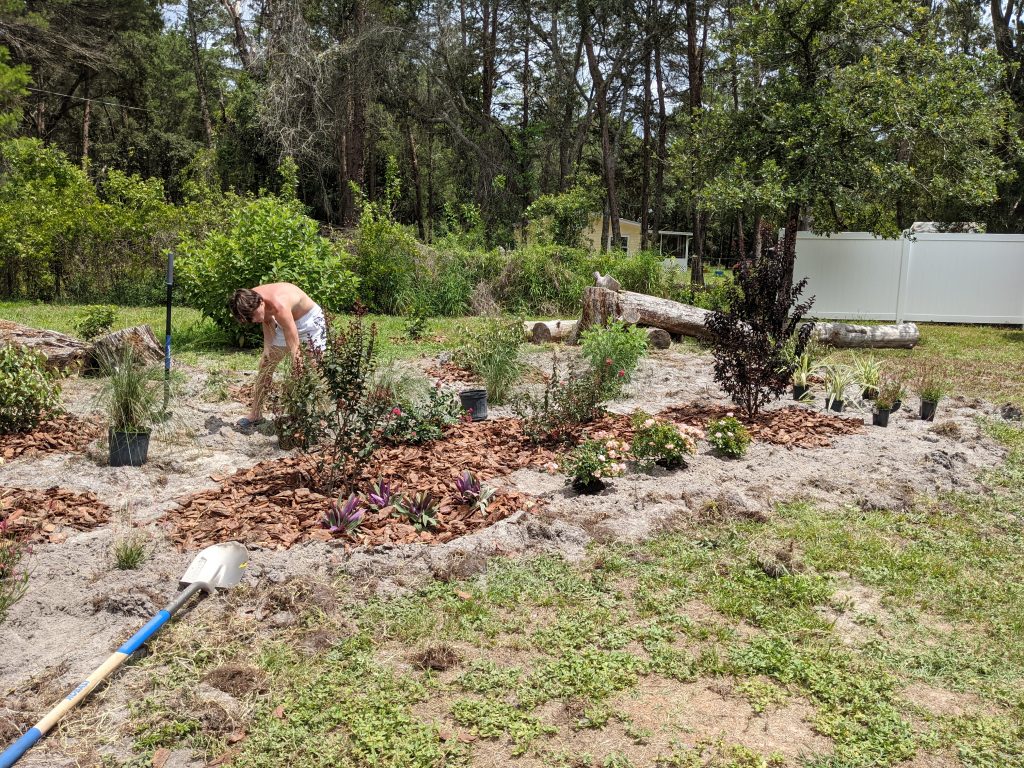

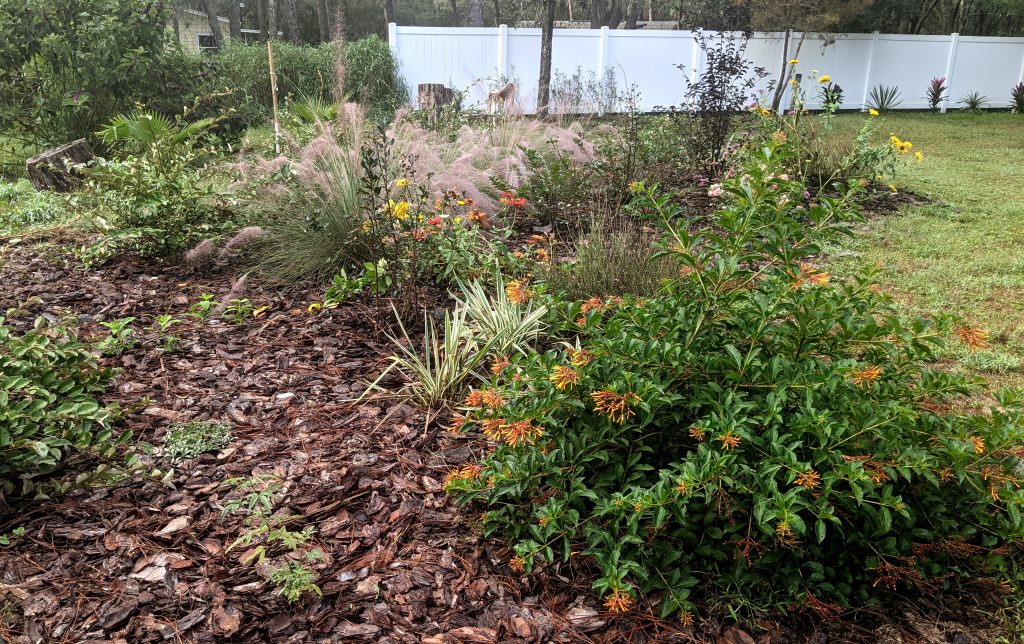
That oddball firebush got me to thinking about color schemes. The entire project reinforced “right plant, right place” and raised my awareness of zone 9 plants that can take the worst of the brutal full sun in Florida has to offer… even during summer monsoons and heat spells. Here is a list of proven heat lovers, both annuals and perennials, that bloom in pinks, berries, blues, and whites. Some of these plants come in more than one of the analogous colors.
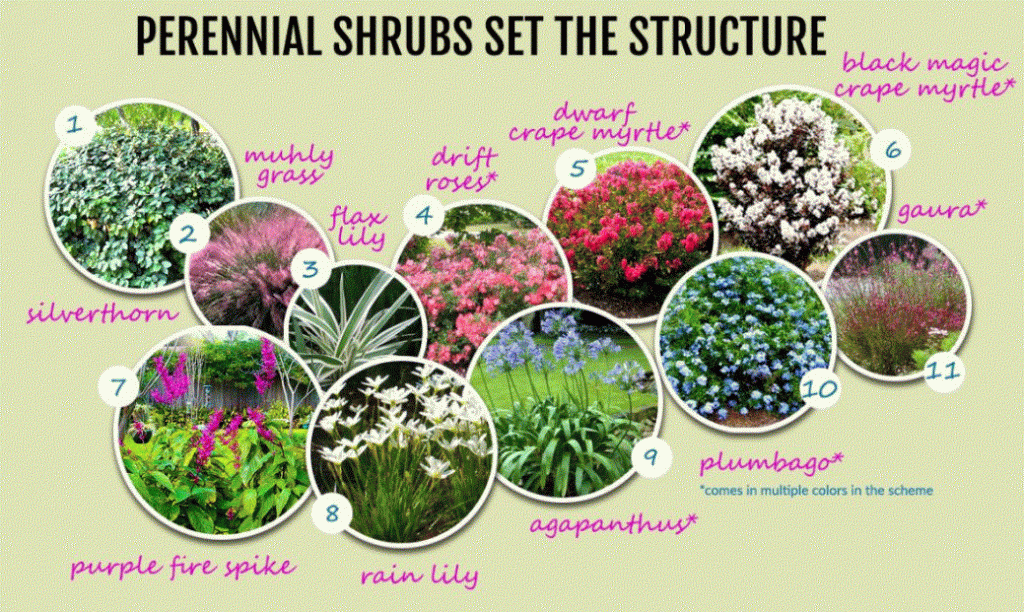
The garden has come a very long way in just 6 months. Every plant (that survived) is thriving and loving life (it was a mistake to put the Dianella and the oyster plants in full sun). I did have to relocate the oyster plants and the experiment splitting pups off the Chinese fan palm failed miserably. Perhaps it would have worked if I put them in a shadier location.
Typically, I leave space for mature plant sizes. However, most of the gardens I admire are jam packed with plants above and beneath each other. I always hear, if you don’t plant something in the gap, Mother Nature will! I’m not a big fan of weeding… so a’propagating and a’seeding I will go. My new propagations include a pink oleander, a lilac vitex/chaste tree, and a yellow allamanda. I’m also planning to fill the front in with more drift roses. And, I just dusted open areas with hundreds of snapdragon seeds which should fill in nicely in the cooler months…crossing fingers.
Stay tuned for updates as we round the six month mark and beyond!
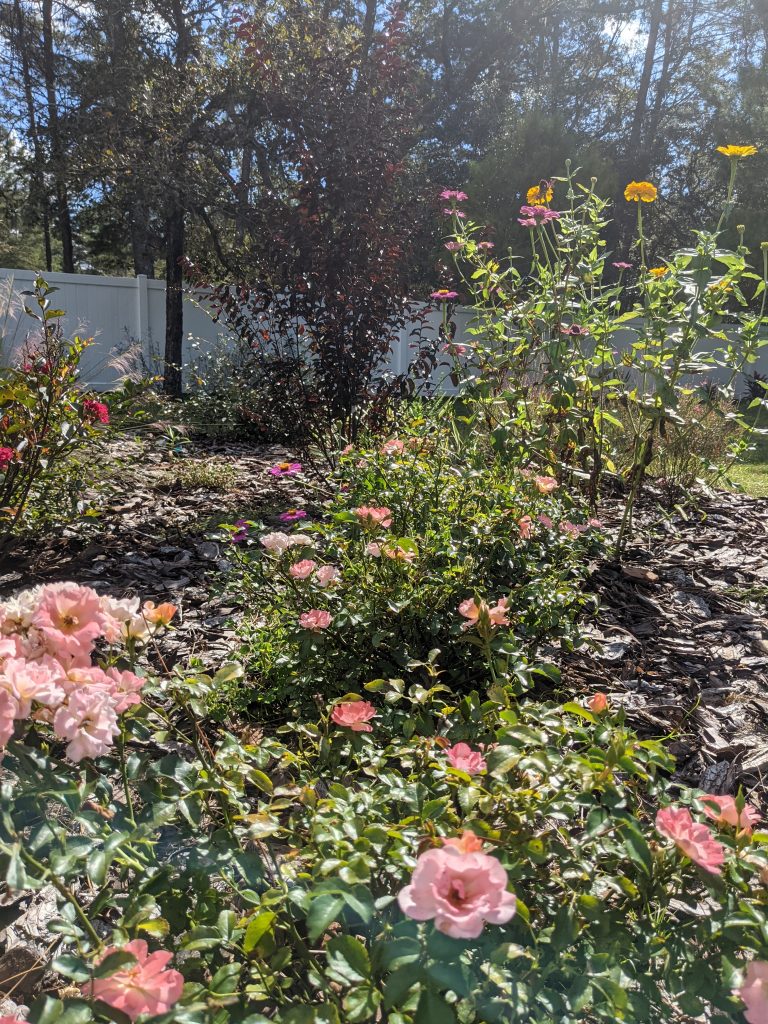
Here’s a June 2022 update. I cast a bunch of seeds into the bare areas of the mulch and now have a veritable wildflower garden! The secret is definitely mulch.
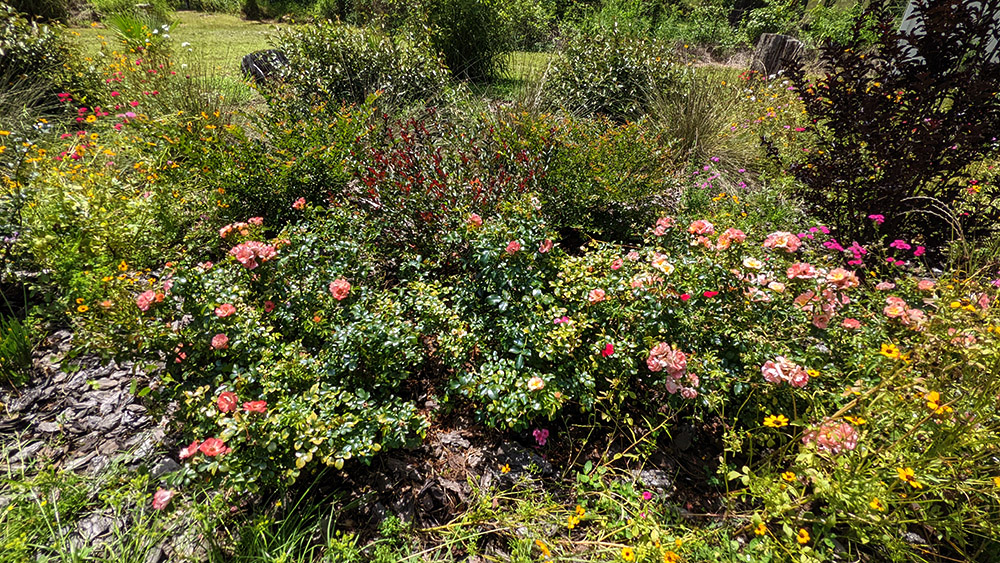
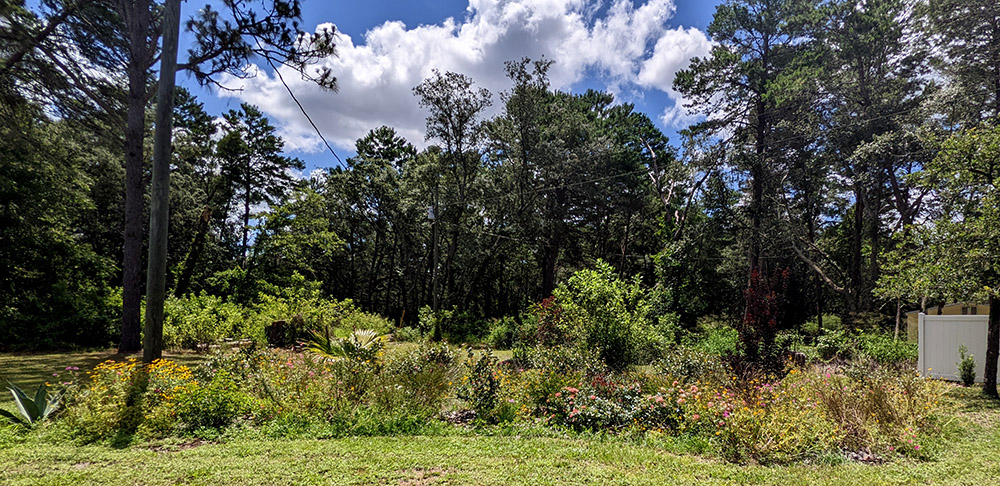
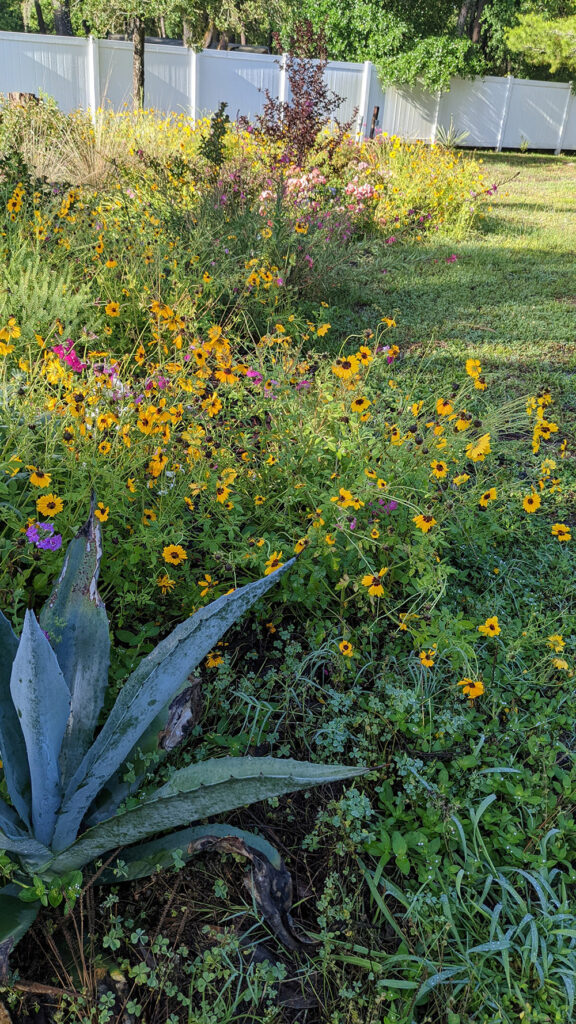
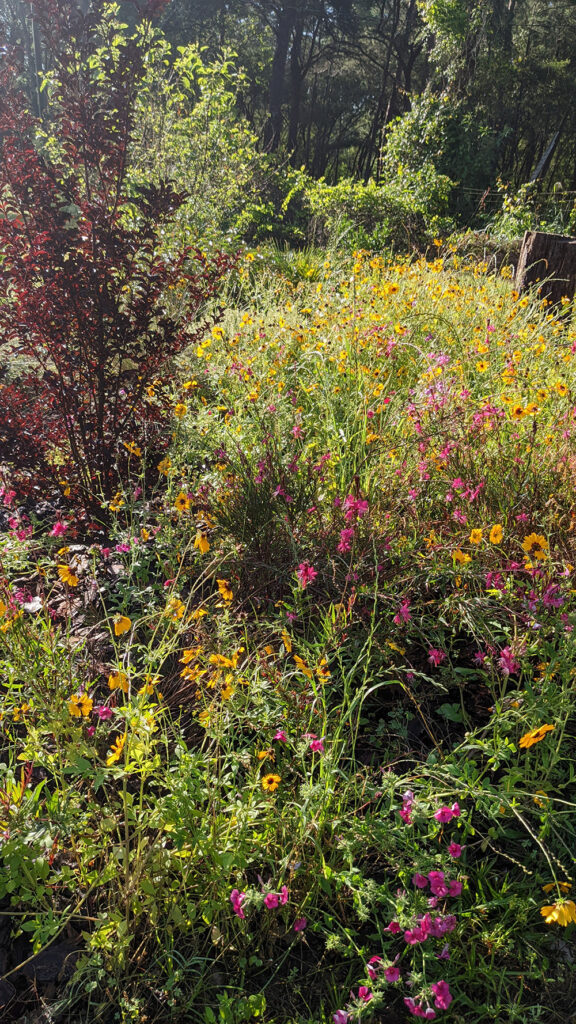


One year later…



I had to move the muhly grass as it became obscured by the massive size of the crepe myrtle bushes. Since the original planting, I add more plants such as daylilies, society garlic, the vitex tree, bottlebrush, and various roses. I also wanted an evergreen vertical element so I planted 5 Taylor junipers. The Karl Foerster grasses are wee tiny at the moment. I also added two tiny rose of sharons, an oleander, a Chinese snowball viburnum, three Washintonia, phlox, coreopsis and more. Some of the plants that died due to too much sun/heat were: gaura, oyster plant, and the new zealand flax (i transplanted some before it was too late!)
